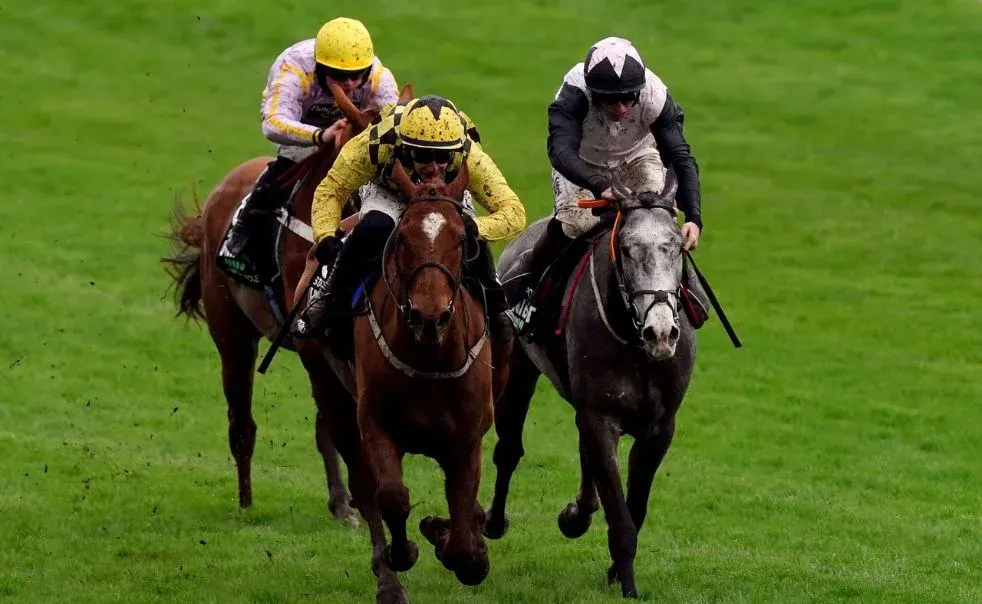Irish Racing’s Strength Shines at Cheltenham

Elle
Mar 18th 2025
Likes
Share:
March announces the Cheltenham Festival which is so dear in Irish racing. In four days, the best horses in Ireland compete against one another along with trainers and jockeys on a stage that has proved to be much more than a challenge for champions. Many thousands will flock to cheer them on; many thousands more will tune in, at home, as well.
Since 1989 when no single horse trained in Ireland was able to win a race at all, Cheltenham has had an Indian impact. The imprint of making horse racing and breeding much stronger was there. By 2021, 24 of the 29 races were won by Irish racing trained horses-an impressive statistic which is now the result of many years’ work. Over the past three years, the numbers have steadied at 18 wins, thus retaining a strong presence at the Festival.
All are looking toward Galopin Des Champs this year. Trained by Willie Mullins, he aims to win a Gold Cup for the third time in a row; Arkle in 1966 was the last Irish racing-trained horse to do so, making this a potential landmark occasion in the history of racing.
Willie Mullins-Dominating Force in Irish Racing Influence Far Beyond Cheltenham: The most successful trainer in this Festival’s history, Willie Mullins continues to shape the role with a strong team of contenders every year. Irish fans are present in hordes at Cheltenham, many of them making the journey to see the trainers, including Mullins, land hits on the big stage, which he has always done.
Outside of Cheltenham, Irish racing thrives, with increasing attendance and investment. During the 2024 season, more than 1.24 million racegoers came out, and prize money was increased to 69.9 million, with an additional allocation of 1 million earmarked for 2025. Although the competition is fierce, Mullins sets the standard and affirms the acclaim of Ireland in the field.
Growth in commercial sponsorship has reached about 7.9 percent to come in at 9.7 million buoyed mostly by sponsorships from Dubai Duty-Free, the Bahrain Turf Club, Savills, Paddy Power, and Boylesports. Betting at racetracks increased by 4.5 percent to 84.1 million, and bookmaker turnover grew by 5.6 percent to 73.7 million.
Global investors accounted for 197.8 million worth of sales at auction houses such as Goffs and Tattersalls, with buyers investing in Irish racing horses. The prize money won by Irish racing runners in Britain rose 16% to 19.4 million, while earnings from races overseas reached 9.2 million.
Continued vibrant ownership figures, with 4,741 active owners recording an increase of 0.9%. Syndicate ownership also recorded an increase of 6.7%, signifying increased involvement at different levels. The number of horses under training shot up by 0.4% to 10,488, proving still a steady supply of talent for the future competition.
Racing has also produced household names, with jockeys like Paul Townend and Rachael Blackmore gaining recognition far beyond the sport itself. Their success has added to the growing interest in horse racing, attracting new audiences and participants.
Irish racing-trained horses continue to perform well beyond home soil. Prize money won by Irish racing runners in Britain rose by 16% to 19.4 million, while earnings from races in other countries reached 9.2 million.
Ownership figures remain strong, with 4,741 active owners recording a slight increase of 0.9%. Syndicate ownership also saw a rise of 6.7%, reflecting growing participation at different levels. The number of horses in training increased from the previous year’s figure of 0.4% to a total of 10,488, showing there shall always be talents in steady supply for future competitions.
Irish racing has developed mainly thanks to state funding support. The Horse and Greyhound Racing Fund, initiated by former Minister of Finance Charlie McCreevy, extends fiscal support to maintain the industry. In the most recent budget allocation, 79.8 million was injected into horse racing. While this level of funding is sometimes reported to be in contention, one Deloitte report indicated in 2023 that the industry generates a return of 35 to 1 on government investment.
Recent strategic plans of the industry are likely to produce even better fruits than what they had. Their aim now is to increase the economic contribution of horse racing from 2.46 billion to 3 billion by the year 2028, thus strengthening the position of this industry as one of the important sectors of the economy in Ireland.
Cheltenham is a highlight of the racing calendar, but it is also a reflection of the strength behind Irish racing. As the action unfolds, the focus will be on the performances of top horses like Galopin Des Champs. Beyond the competition, the industry remains well-positioned for future success, driven by investment, participation, and a rich tradition that continues to thrive.
